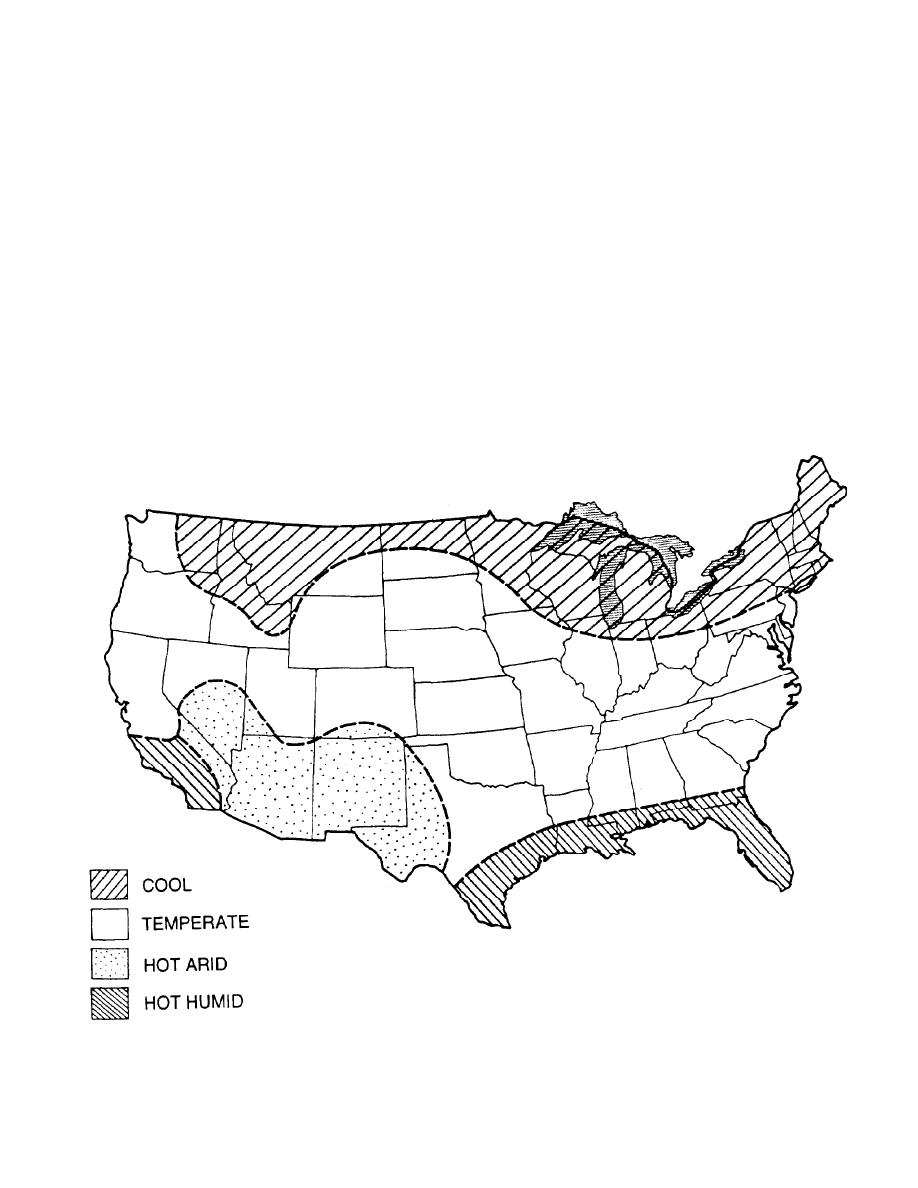
TM 5-803-14
(d) Impermeable soils can create poor drain-
(a) Cool. Long, severe winters and cool sum-
age.
mers; ample precipitation; limited sunshine; and
(e) Soils subject to wind or water erosion
severe winds.
require maintaining existing grades, minimizing
(b) Temperate. Weather with extreme
volume and velocity of runoff, and providing good
changes from cold, snowy winters to hot, humid
surface cover.
summers; ample precipitation; adequate sunshine;
(5) Climate. Climate is the weather which
and a good deal of wind activity.
occurs in an area over an extended period of time.
(c) Hot arid. Extreme fluctuations from hot
Climatic considerations are important to human
to cold in daily temperatures; very limited precipi-
comfort and energy efficiency. The following infor-
tation; ample sunshine; and severe hot winds.
mation should be obtained and evaluated: average
(d) Hot humid. Moderate temperatures;
monthly temperature range, quantity and fre-
warm, moisture-laden air; ample sunshine; and
quency of precipitation, orientation and angle of
often limited air movement.
sun at sunrise and sunset during midwinter and
(6) Microclimate. The site-specific micro-
midsummer, and prevailing wind direction. There
climate will be evaluated by determining how the
are found generally accepted climatic zones in the
general weather conditions are influenced by such
continental United States, as illustrated in figure
site elements as topography, vegetation and water
3-6. The general climatic considerations in these
bodies. The principal climatic variables are radi-
zones are:
ant energy, temperature, air movement and hu-
Figure 3-6. Climatic Zones in the Continental United States.
3-10



 Previous Page
Previous Page
